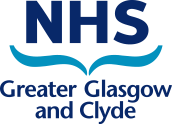General overview of oral Proton Pump Inhibitors (PPIs)
This is first in a series of PPI blogs
Key messages
Appropriate prescribing
-
PPIs are the second most commonly prescribed drug class in NHSGGC with almost 1.5 million prescriptions issued annually by primary care alone.
-
As with all medication, PPIs should only be commenced where there is a clear clinical indication and at the lowest possible dose and duration. It has been reported that between 25-70% of PPI prescriptions have no appropriate indication and approximately 40-85% of people prescribed a PPI do not have a documented indication for long-term therapy, suggesting the possibility of unnecessary long term use.
-
The indication, duration and details of review should be documented in the patient’s clinical record and communicated across care settings where appropriate.
-
Refer to Proton Pump Inhibitors Prescribing on Discharge from Hospital for further information.
Adverse effects
-
Although PPIs are generally well tolerated, there is evidence to suggest that this drug class may be associated with potentially serious adverse effects that need to be considered prior to use.
-
Adverse effects include risk of Clostridioides difficile infection (CDI), hypomagnesaemia, fractures, and subacute cutaneous lupus erythematosus (SCLE). These will be discussed in a future blog series.
-
Report suspected side effects via the MHRA Yellow Card scheme. Refer to Yellow Card Reporting – An update for healthcare professionals for further information on reporting.
Place in therapy
-
Omeprazole and lansoprazole are the preferred PPIs within NHSGGC for adults.
-
Omeprazole, esomeprazole and pantoprazole are available to buy over-the-counter (OTC), therefore, it is important to consider this when prescribing a PPI to avoid duplicate treatment or if a patient presents with one of the adverse effects noted above.
Interactions
-
PPIs are known to have various drug interactions which need to be considered prior to use. Although examples of interactions are provided below, the clinical significance should be reviewed when deciding on concomitant treatment. In addition to standard resources for checking interactions (BNF and emc), the importance and management can be checked using Stockley’s Drug Interactions via MedicinesComplete (Athens password may be required).
-
CYP2C19 is the main route of metabolism of esomeprazole, lansoprazole, omeprazole, pantoprazole, and is also involved in the metabolism of rabeprazole. Omeprazole and esomeprazole are also potent inhibitors of CYP2C19, and therefore they might increase the exposure to drugs that are metabolised by this isoenzyme. (Examples: warfarin, cilostazol, diazepam and phenytoin).
-
Alterations in gastric pH can also affect drug absorption. For example, rises in pH can markedly reduce the absorption of drugs such as atazanivir and ketoconazole.
-
An interaction between omeprazole and clopidogrel is commonly discussed in the literature. There is conflicting information surrounding the clinical significance of this interaction. Nonetheless, current MHRA advice is if co-administration of clopidogrel and a PPI is required, avoid omeprazole and esomeprazole. Lansoprazole is therefore the PPI of choice for co-administration with clopidogrel in NHSGGC.
Refer to other blogs in the PPI series:
Proton pump inhibitors (PPIs): potential link with Clostridioides difficile infection and pneumonia
Proton Pump Inhibitors (PPIs): Adverse Effects Reported by the MHRA
Published: 02/12/2022 and links updated 05/06/2024. Medicines Update blogs are correct at the time of publishing
